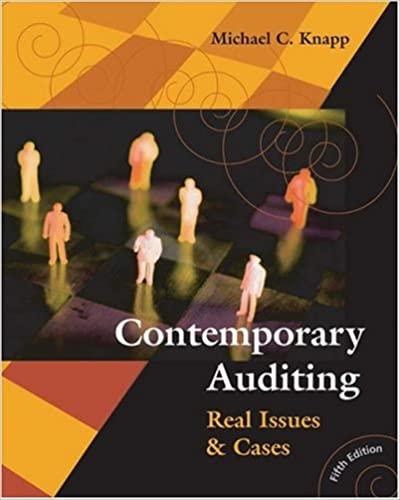Question
On June 18, 1995, police officer Jason Leavitt stopped motorist Archie Elliott. Elliott smelled of alcohol, and he admitted that he had been drinking excessively.
On June 18, 1995, police officer Jason Leavitt stopped motorist Archie Elliott. Elliott smelled of alcohol, and he admitted that he had been drinking excessively. Elliott failed several sobriety tests and was having trouble walking. Leavitt called for backup, handcuffed Elliott, and advised him that he was under arrest for driving while intoxicated. Leavitt briefly searched Elliott, finding no weapon or other contraband. Leavitt remembers checking the back side of Elliott's body but does not recall whether he checked the front.
Officer Wayne Cheney soon joined Leavitt on the scene. Cheney assisted Leavitt in placing Elliott in the front passenger seat of Leavitt's police car with the seatbelt fastened, the door closed, and the window rolled up.
The officers were talking by the passenger side of the car when Leavitt noticed a movement and looked to find Elliott with his finger on the trigger of a small handgun pointed at Leavitt and Cheney. Cheney also saw the gun. Elliott was very thin; he had released the seat belt and twisted his arms to the right side of his body to position the weapon. Leavitt yelled, "Gun!," and ordered Elliott to drop it. After Elliott did not respond, Leavitt and Cheney commenced firing, killing Elliott. The officers did not discharge all of their bullets; 22 were fired while 10 were found still in their weapons. Cheney then retrieved the gun, which had remained clasped in Elliott's hand.
The law at the time stipulated that "a police officer may use deadly force when the officer has sound reason to believe that a suspect poses a threat of serious physical harm to the officer or others."
- Explain what you think goes through an officer's mind during an incident like the one described above.
- Discuss whether this account of the events seem factual, and if not, highlight areas of concern
Step by Step Solution
There are 3 Steps involved in it
Step: 1

Get Instant Access to Expert-Tailored Solutions
See step-by-step solutions with expert insights and AI powered tools for academic success
Step: 2

Step: 3

Ace Your Homework with AI
Get the answers you need in no time with our AI-driven, step-by-step assistance
Get Started


